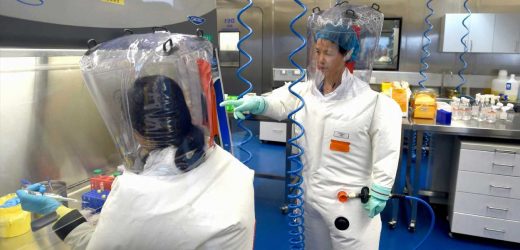SCIENTISTS studying bat diseases at a maximum-security lab in Wuhan helped military officials in a top secret project designed to investigate animal viruses, it has been reported.
The nationwide scheme, directed by a leading state body, is said to have launched nine years ago to find new bugs.
? Read our coronavirus live blog for the latest updates
Documents seen by The Mail on Sunday detail the major project called "the discovery of animal-delivered pathogens carried by wild animals".
The virus-hunting scheme was set out to find organisms that could infect humans and investigate their evolution, the paper reports.
And one leading Chinese scientist, who published the first genetic sequence of Covid-19 in January last year, found 143 new diseases in the first three years of the project alone.
The top secret venture was launched in 2012 and was funded by the National Natural Science Foundation of China.
And the fact it was led by both civilian and military scientists appears to back up incendiary claims from the United States alleging collaboration between the Wuhan Institute of Virology (WIV) and the country's armed forces.
The scheme's five team leaders include Shi Zhengli, the WIV virologist nicknamed "Bat Woman" for her trips to find samples in caves, and Cao Wuchun, a senior army officer and government adviser on bioterrorism.
Prof Shi denied the US allegations last month, saying: "I don't know of any military work at the WIV. That info is incorrect."
Another leader Xu Jianguo, boasted at a conference in 2019 that "a giant network of infectious disease prevention and control is taking shape".
The professor also headed the first expert group investigating Covid's emergence in Wuhan.
He denied human transmission initially, despite evidence from hospitals, then insisted in mid-January "this epidemic is limited and will end if there are no new cases next week".
One review of his virus-hunting project admitted "a large number of new viruses have been discovered, causing great concern in the international virology community".
It added that if pathogens spread to humans and livestock, they could cause new infectious diseases "posing a great threat to human health and life safety and may cause major economic losses, even affect social stability".
An update in 2018 said that the scientific teams had found four new pathogens and ten new bacteria while "more than 1,640 new viruses were discovered using metagenomics technology".
Such research was based on extraction of genetic material from samples like those collected by Prof Shi from bat faeces and blood in the cave networks of southern China.
The extensive sampling led to Prof Shi's rapid revelation last year of RaTG13, the closest known relative to the new strain of coronavirus that causes Covid.
It was stored at the Wuhan lab, the biggest repository of bat coronaviruses in Asia.
And it later emerged she had changed its name from another virus previously identified, blurring its link to three miners who died from a strange respiratory disease they caught clearing bat droppings.
Prof Shi admitted that eight more unidentified SARS viruses had been collected in the mine.
In September 2019, the institute took its database of virus samples offline, just a few weeks before Covid cases exploded in Wuhan.
Source: Read Full Article






